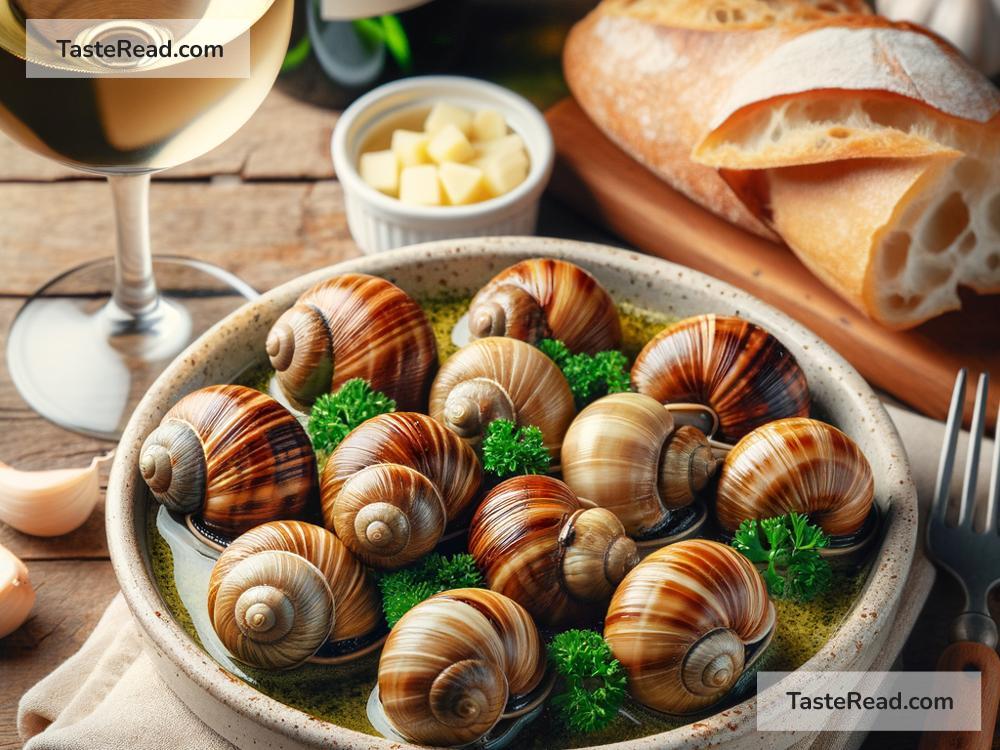The Origins of the French Escargot: A Delicious Story
When you think of French cuisine, you might picture croissants, baguettes, or coq au vin. But one dish stands out as both unique and fascinating: escargot. Escargot, which means “snail” in French, is a classic delicacy that has been enjoyed in France for centuries. Snails might not seem like the most likely ingredient for a gourmet meal, but they have a long and rich history. Where did this famous dish come from, and how did it become so popular? Let’s take a closer look at the origins of the French escargot.
Snails in Ancient Times
The practice of eating snails actually goes back much further than French cuisine. Archaeologists believe humans have been eating snails for thousands of years. Evidence from prehistoric times shows that people in Europe collected and cooked snails because they were easy to find and filled with nutrients. Snails also served as a reliable food source for communities living in areas with limited resources.
The ancient Romans were especially fond of eating snails. Famous Roman authors like Pliny the Elder and Apicius wrote about recipes and farming techniques for snails. Wealthy Romans even created snail farms to raise the creatures in controlled environments. They fed the snails wine and special herbs to enhance their flavor. In Roman culture, snails were seen as a delicacy and were often served at lavish feasts. When the Roman Empire expanded across Europe, snail farming and cooking spread with it, laying the groundwork for escargot to appear in French cuisine.
From Farm to Table: Snails in Early France
By medieval times, snails had become a popular food across much of Europe, including France. During Lent and other fasting periods, when Christians avoided eating meat, snails were often seen as an acceptable alternative. This helped snails become a regular part of the diet for many people.
France’s love for snails grew slowly over the centuries, especially in regions like Burgundy, where the land was ideal for snail farming. Burgundians developed recipes using garlic, butter, and parsley—ingredients that remain central to modern escargot dishes. Farmers in this area became skilled at collecting and preparing snails, and the dish began to gain recognition for its distinct flavor.
The Royal Connection
The rise of escargot as a fine dining dish can be traced, in part, to French royalty. During the reign of King Louis XIV, French cuisine underwent an extraordinary transformation. The Sun King’s court at Versailles demanded rich and luxurious meals, and chefs experimented with unique ingredients to impress the nobility. Though escargot was not initially a royal dish, its inclusion in menus with complex sauces and elegant presentations helped elevate its status over time.
Even after the French Revolution, when monarchy fell and cuisine became more accessible, escargot retained its reputation as a refined dish. It symbolized tradition and sophistication, making it popular among the upper class and eventually the wider French population.
Escargot Becomes Iconic
The real turning point for escargot as part of French identity came during the 19th century. In 1814, the famous French chef Antoine Carême served escargot to Russian Tsar Alexander I at a grand banquet in Paris. The tsar loved the dish, and this event brought international attention to escargot as a French delicacy. Carême’s recipe featured snails cooked in their shells with a rich garlic butter sauce—a method still widely used today.
From that moment on, escargot became a symbol of French cuisine, known for its unique blend of flavors and textures. Restaurants across France began serving the dish, and escargot solidified its place on menus as a must-try culinary experience.
The Modern Escargot Tradition
Today, escargot is enjoyed in restaurants all over France and beyond. Preparing escargot involves cleaning and cooking farmed snails, which are often paired with butter, garlic, parsley, and sometimes wine. The snails are usually served in their shells, making the presentation as much a part of the experience as the taste.
While escargot’s reputation as a “fancy” dish remains intact, it is also enjoyed by everyday people in France. Escargot is especially popular during holidays like Christmas and New Year’s Eve, when families gather for celebratory meals filled with special dishes.
Escargot continues to be loved for its rich flavors and connection to French heritage. France even hosts festivals dedicated to snails, such as the annual snail fair in Burgundy, where locals and visitors celebrate this humble yet extraordinary food.
Why Escargot Matters
Escargot is more than just a dish—it’s a testament to France’s creative and resourceful approach to cooking. From its early days in Roman culture to its rise in French royalty and modern fine dining, escargot tells a story about history, tradition, and the human ability to turn even the simplest ingredients into culinary art.
If you ever visit France, don’t be afraid to try escargot. Though it might seem unusual at first, it’s a unique taste that connects you to centuries of French culture. With its buttery sauce and tender texture, it’s easy to see why escargot has remained so popular for so long.
So, the next time you see snails on a menu, remember their journey from ancient Rome to the heart of French cooking. Bon appétit!


